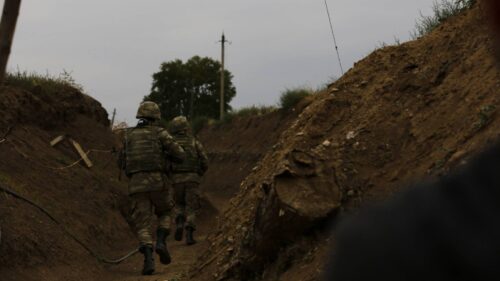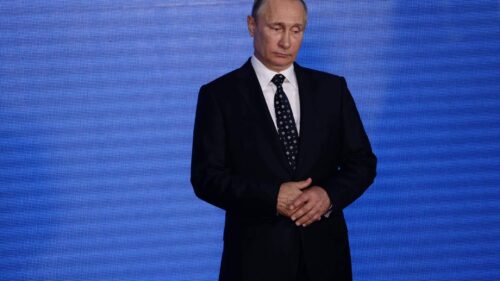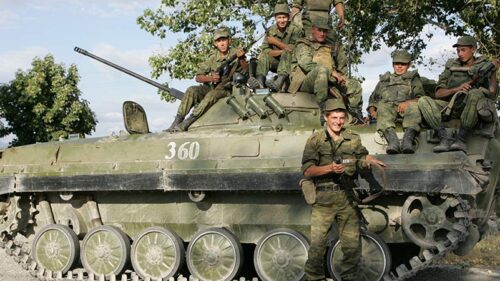A surge in mentions of Armenia and Georgia in the US foreign policy, particularly since the Russia–Ukraine war, coincides with a surge in US diplomatic activity around the globe. The US is actively trying to weaken Russia’s influence in the South Caucasus, particularly in Georgia and Armenia. It is exploiting existing tensions between these countries and Russia to pull them away from Russia’s orbit. However, achieving this goal is challenging due to the strong economic and cultural ties that persist between these countries and Russia.
The geopolitical tug-of-war in the South Caucasus
The collapse of the USSR in 1991 triggered a scramble for solutions to anticipated economic hardship and instability among the newly independent republics. Thus, the former Soviet states rushed to establish regional cooperation initiatives. Some of the most prominent are:
— The Collective Security Treaty Organization (CSTO), established in 1992 as the Collective Security Treaty.
— The Eurasian Economic Union (EAEU), proposed in 1994.
— The GUAM Organization for Democracy and Economic Development (GUAM), founded in 1997.
— The Commonwealth of Independent States (CIS), formed immediately after the USSR’s dissolution in 1991.
Russia, which styles itself as the USSR’s heir, scrambled to maintain influence over the scattered republics. It exerted control through Moscow-dominated organizations like the EAEU and CSTO. However, Russia’s heavy-handed approach, prioritizing its own interests over those of member states, created tension. The recent conflict between Armenia and Azerbaijan in Nagorno-Karabakh exemplifies this perfectly.
Related Reading
Armenia attempted a balancing act for years. It participated in most Russian initiatives and fostered Armenia–Russia ties while simultaneously courting the West, particularly the EU and France. This tightrope walk inevitably led to friction with Russia and strained their diplomatic relationship. The consequence has been a closer Russia–Azerbaijan bond. The episode also pushed Azerbaijan away from the West, who sided with Armenia (possibly calculating it would be easier to separate Armenia from Russia’s influence).
Armenia’s persistent efforts to escape Russia’s influence seem to have triggered a proxy punishment. Russia’s peacekeeping force deliberately remained inert during Azerbaijan’s capture of the disputed territory. Armenia blamed Russia for the deterioration of the situation and consequently suspended its participation in the CSTO. Armenian officials, disillusioned by Russia’s response to the conflict, are actively considering a full withdrawal from the treaty. They now recognize the need to diversify their security options.
In 2006, Georgia’s parliament voted unanimously for NATO membership. Russia responded with a 2008 attack supporting the breakaway republics of South Ossetia and Abkhazia. The attack froze Russia–Georgia relations and made Georgia a haven for Russian dissidents. It was a punishment for Georgia’s westward tilt or Russia’s last resort to control its former CIS partner.
The West’s gambit in weakening Russia’s grip
All the countries in the South Caucasus, Russia’s southern bulwark due to geography and politics, were once firmly within Moscow’s sphere of influence. The US and Europe are trying to chip away at Russia’s alliance system. History reveals the more successful strategist so far. The Ukraine invasion, dividing the world for similar reasons, has further weakened Russia’s grip. Republics uncomfortable with Russia’s course, or fearing they’re next, are ripe for the picking.
The 2019 RAND report advocated for the US to exploit existing tensions in the South Caucasus to weaken Russia’s influence. The report proposed two options: pushing Georgia and Azerbaijan towards NATO or persuading Armenia to break ties with Russia. The US partially pursued the first option, and Armenia’s disillusionment with Russia suggests progress on the second. RAND predicted this would force Russia to withdraw military forces. However, Armenia’s signed agreements preventing the unilateral removal of peacekeepers until 2044.
The West, beyond offering moral support — which doesn’t win back lost territory — couldn’t and didn’t provide tangible military aid to Armenia. The West is eager for the South Caucasus to break free from Russia. However, centuries-old ties don’t vanish overnight. Direct involvement by the US or EU risks escalating tensions with Russia, especially considering the already volatile situation in Ukraine.
Instead, Azerbaijan’s continued pressure, seizing more Armenian land, achieves the West’s goals indirectly. With Russia’s security guarantees unreliable, a weakened Armenia is forced to seek alternative solutions. Ironically, these options may lie with Russia’s ideological rivals, despite the unlikelihood of such an alliance.
The West’s inaction towards Armenia might be deliberate. Pre-conflict, the US grappled with solutions that wouldn’t antagonize any party. Now, the situation thrusts a choice upon it. Without intervention, Armenia inches closer to the West, further complicating relations with Russia; Armenia suffers, but politics is a ruthless game.
EU membership for Georgia and Armenia is a long shot. The EU is already overstreched to incorporte the nearer-by Moldova and Montenegro. Concrete promises, beyond cooperation networks, are unlikely. The potential costs of expansion outweigh the benefits, especially for a troubled Armenia squeezed between regional powers. The US strategy, on the other hand, seems effective: Armenia distances itself from Russia. Diplomatic support and expressions of concern position it as an ally without heavy resource investment, beyond Blinken’s time. Perhaps only Azerbaijani overreach, grabbing more than it can handle, would force intervention from Russia or the West.
The US wants to incentivize Georgia to fully return to its NATO aspirations and to encourage Armenia to close down the Russian Gyumri base on its territory. This would force Russia to shift significant resources and troops to its Southern Military District.
Finally, Turkey plays a critical role. Without it, the West can’t pull these countries away from Russia. Turkey offers the only access point to the West for the South Caucasus. This gives it a powerful position with a lot of leverage.
Secondary benefits exist as well. Azerbaijan was initially the most promising nation in the region. It could have provided intelligence (against Iran) and access to Caspian Sea oil and gas reserves. However, Azerbaijan’s strong ties to Turkey make it uninterested in closer cooperation with the US.
Russia’s waning power in the South Caucasus
Historically, Armenia and Georgia served as crucial strongholds for Russia. They still maintain close economic and other ties. Russia is actively working to retain influence in the region. Georgian Airways’ resumption of direct flights to Russia in May 2023 exemplifies it. Additionally, Georgian Prime Minister Irakli Kobakhidze has accused the US of backing revolution attempts in Georgia (2020 and 2023) and labeled Ukrainization as a threat to his country.
Last month, Armenian Prime Minister Nikol Pashinyan traveled to Moscow to meet with Russian President Vladimir Putin. Putin boasted of growing trade relations and predicted even stronger ties. While the Russian public remained skeptical, Armenia’s historical dependence on Russian trade, coupled with its weakened position after the conflict and lack of Western support, left Pashinyan with few options. The security portion of their meeting, however, remained shrouded in secrecy.
By defying Russia, Georgia and Armenia have become like fortified towers facing inward: the closer to the West, the more threatened Russia feels. Russia’s heavy-handed and master-slave approach only exacerbates the situation. Forced to find new allies, it struggles to replace the economic and geographic importance of its former friends.
The simmering Ukrainian conflict fuels a full-blown diplomatic war in the South Caucasus. Clinging to aggression instead of compromise is a dead end, considering Russia’s historical context of the Russian Empire and the Soviet Union. Pashinyan’s meeting with Putin could be a temporary olive branch to regain Armenia’s loyalty, or a cynical exploitation of its weakness. Armenia’s lack of alternatives makes it vulnerable.
Western officials are also courting other countries, particularly Kazakhstan. However, Kazakhstan’s stronger ties and fewer tensions with Russia make it a tougher target. So, the West is focusing on weaker, dependent countries like Kyrgyzstan and those already distancing themselves from Russia, like Georgia and Armenia. This confirms analysts’ predictions: The Soviet Union shell is crumbling around Russia, leaving the strength of its sphere of influence uncertain. Relentless Western pressure combined with Russia’s hardline approach and outdated dominance will require a significant change if Moscow is to hold on.
[Ali Omar Forozish edited this piece]
The views expressed in this article are the author’s own and do not necessarily reflect Fair Observer’s editorial policy.
Support Fair Observer
We rely on your support for our independence, diversity and quality.
For more than 10 years, Fair Observer has been free, fair and independent. No billionaire owns us, no advertisers control us. We are a reader-supported nonprofit. Unlike many other publications, we keep our content free for readers regardless of where they live or whether they can afford to pay. We have no paywalls and no ads.
In the post-truth era of fake news, echo chambers and filter bubbles, we publish a plurality of perspectives from around the world. Anyone can publish with us, but everyone goes through a rigorous editorial process. So, you get fact-checked, well-reasoned content instead of noise.
We publish 2,500+ voices from 90+ countries. We also conduct education and training programs
on subjects ranging from digital media and journalism to writing and critical thinking. This
doesn’t come cheap. Servers, editors, trainers and web developers cost
money.
Please consider supporting us on a regular basis as a recurring donor or a
sustaining member.
Will you support FO’s journalism?
We rely on your support for our independence, diversity and quality.








Comment